Linden Row
Introduction
Text-to-speech Audio
Images
Linden Row Inn
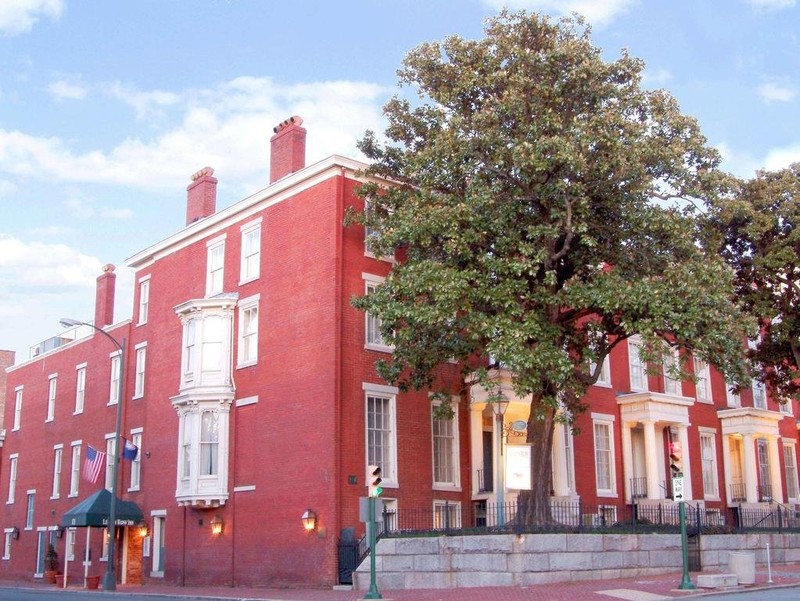
Linden Row Inn street view
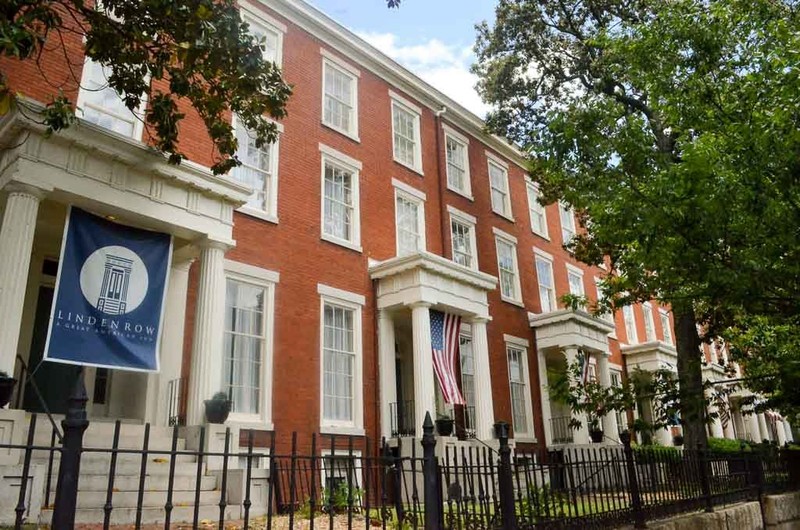
Linden Row Inn street view
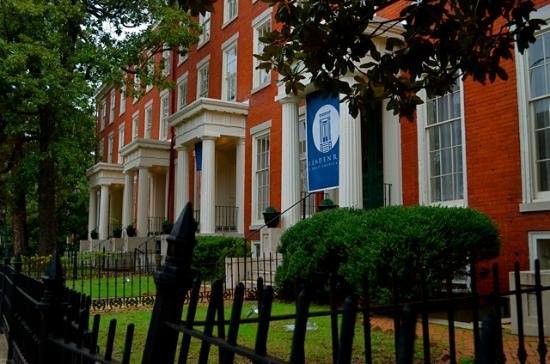
Linden Row Inn interior guest room
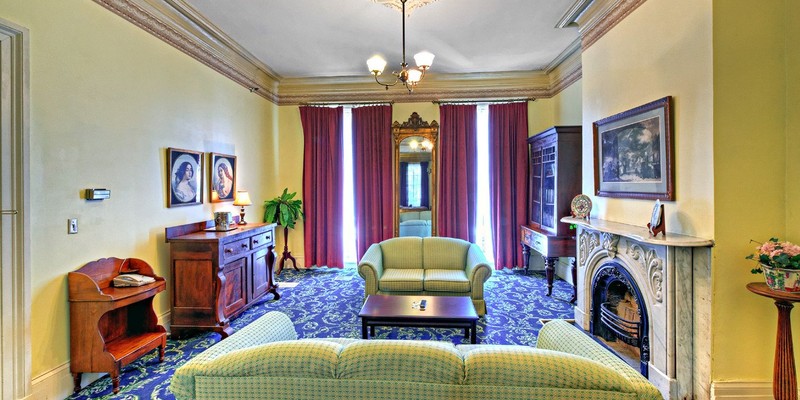
Historic Black and white photo of Linden Row
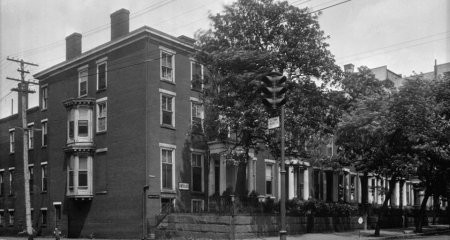
Backstory and Context
Text-to-speech Audio
The land on which Linden Row now sits was once intended to become the site of an early state penitentiary. Owning that parcel of land, Thomas Rutherfoord understood its future residential value and offered the state twelve acres further west down the James River on which to construct the penitentiary. Rutherfoord’s brother-in-law Parson Blair came into possession of this tract of land, located between Grace and Franklin Streets and First and Second Streets, and eventually sold the eastern lots along Franklin Street to Charles Ellis and John Allan in 1816. Ellis busied himself with the creation of a beautiful formal garden that became famous for its rose bushes and jasmine and linden trees.
Five years ealier, Allan and his wife Frances began fostering an orphaned child named Edgar Poe, bestowing upon him the middle name of Allan. Shortly after the purchase of the Franklin Street lots, the Allans traveled to England where they spent the next five years. After returning to Richmond in 1820, the Allans moved in with Charles Ellis. It was during this time that Poe spent a significant amount of time in the formal gardens on Franklin Street which he called Ellison, courting and likely proposing to his first fiancé Elmira Royston. Scholars have long speculated that Ellis’ formal garden served as the inspiration for Poe’s enchanted garden in his poem “To Helen.”
In 1839, a business partner of Charles Ellis, Fleming James, purchased the lot on which the formal garden was located. Eight years later, James constructed the first five rowhouses in 1847 and the sons of Thomas Rutherfoord, Samuel and Alexander, constructed the remaining five rowhouses in 1853. James first named his five rowhouses Linden Square, after the linden trees that grew in the Ellis garden, and with the addition of the subsequent five houses, the block became known as Linden Row. All identically designed in the popular Greek Revival style of the era, each house is three-stories tall, constructed of red brick, and rests upon an English basement. Each house possesses a one-story, one-bay entrance porch with fluted Doric columns. The influence of the British urban terrace concept can be seen in the design of Linden Row.
This row of beautiful homes became a highly sought-after location in Richmond. Prior to the Civil War and afterwards, the two westernmost houses served as D. Lee Powell’s school, the Southern Female Institute from 1853 to 1865. A second girls’ school operated out of Linden Row from 1856 to 1866, the famous Mrs. Pegram’s School. Other notable residents of Linden Row included Dr. William H. Scott, Major Robert Stiles, Mary Johnston, and several other prominent families. During the Civil War, Virginia Pegram’s three sons served in the Confederate Army and her private residence became a social gathering place for her children, Confederate military leaders, and other Richmond socialites during that time. After the war, a third girls’ school opened in Linden Row operated by Miss Virginia Randolph Ellett. Virginia Ellett’s school remained in business from 1895-1906 and educated many prominent women. The Langhorne sisters, Irene and Nancy, were two of such Ellett pupils: Irene becoming the famous “Gibson Girl” and Nancy later became the first female member of the British House of Commons. The Virginia Ellett school later became affiliated with the Episcopal Church and is now known as St. Catherine’s School for Girls.
Unfortunately, during the early 1920s, two of Linden Row’s townhomes were demolished to make room for the Medical Arts Building, now the Linden Towers. Thirty years later, prominent local historian and Franklin Street resident Mary Wingfield Scott purchased the remaining rowhouses and began preserving the buildings. In 1980, Scott donated Linden Row to the Historic Richmond Foundation under the condition that the historic integrity of the property will be maintained. Scott passed away in 1983, and two years later the property was purchased and converted into a 70-room inn. The newly renovated Linden Row Inn opened in 1988 and continues to operate as a high-end, full-service inn in downtown Richmond. During the renovation, the formal gardens were also restored. The namesake linden trees also remain on property for guests to appreciate. Linden Row is one of the nation’s finest surviving examples of Greek Revival style rowhouse architecture.
Linden Row was designated a Virginia Landmark on July 6, 1971 and added to the National Register of Historic Places on November 23, 1971.Sources
Cheek, Elizabeth. National Register of Historic Places Inventory - Nomination Form. Virginia Department of Historic Resources. November 23, 1971. April 19, 2019. https://www.dhr.virginia.gov/VLR_to_transfer/PDFNoms/127-0022_Linden_Row_1971_Final_Nomination.pdf.
History. Linden Row Inn. April 19, 2019. https://www.lindenrowinn.com/history.
Nota, Alexa. Richmond’s Historic Linden Row Inn. Travel Well Magazine. April 19, 2019. http://travelwellmagazine.com/2015/02/historic-linden-row-inn-richmond-va/.
